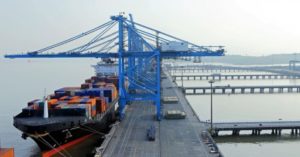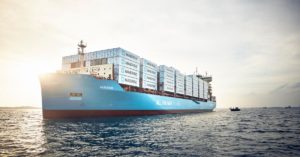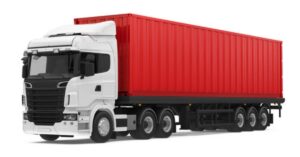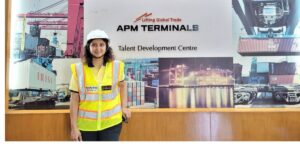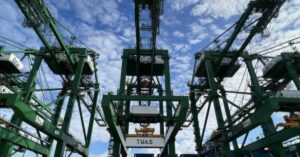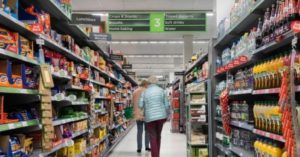The Federation of Indian Export Organisations represents the Indian entrepreneurs in the global market. Known popularly as “FIEO”, this apex body of Indian export promotion organizations was set up jointly by the Ministry of Commerce, Government of India and private trade and industry in the year 1965. FIEO is thus a partner of the Government of India in promoting India’s exports.
It is an apex body of the export promotion councils, commodity boards and export development authorities in India. FIEO Provides the crucial interface between international trading community of India & the Central and State Governments, financial institutions, ports, railways, surface transport and all engaged in export trade facilitation. Directly and indirectly it serves the interests of over 200,000 exporters from every goods and services sector in the country.
We are in the pandemic times as you know and for the past one-a-half year, we have been through two waves of the pandemic and every sector has seen its share of impact. So, from the export point of view, we would like to know from you, what has been the impact on Indian exports in this past one-and-a-half year of the pandemic and the second part of the question is in July we have seen sudden in increase in Indian exports, almost 48% over the previous year. So, what is driving the growth in exports?
pandemic is definitely hit us badly, especially the first wave started at the end of February. Up to December, we have been affected badly, there that time what happened even Europe and USA all closed and here India also closed so getting orders and manufacturing or exporting was difficult. So the last financial year, it was a really bad year. Then we started from I can say from November onwards. The orders started picking up and we are doing something good, then again the second pandemic has come and it has hit us. That time really the orders were coming because Europe and USA was opened and orders we started getting in but again up to March again this problem came so we were badly hit. After March, actually the order position became good and we started booking orders and again there was a second wave, and especially wave hit Indian part of it because other parts of the world like USA, EU were placing more orders as their markets opened up. Some states in India were also closed for April and May. If they would not have closed April and May we would have reached more than what we are talking about, nearly 30% of the target we have achieved during this period. Our honorable Prime Minister’s target is $400 billion. Hope the third wave we have already taken the precaution by the state government as well as the central government. I am very confident that we will reach this $400 billion target which our honorable Prime Minister also spoke about.
Let’s focus a bit more on this $400 billion target and Prime Minister has also announced plans to drop retrospective taxation. So, as the head of FIEO, how do you suggest, what should be the strategy to proceed towards this target and how it can be achieved?
See, as I said, it is achievable target but retrospective tax withdrawal will not help much to the exporters; it is a big corporate company where they fail to pay taxes and legal cases are going, for them maybe it is beneficial, not for the exporters. What we have asked our honourable Prime Minister is we can achieve the target immediately so we have to get lot of dues from the government which refund of taxes, RoSCTL and things like that. So, we requested the honourable Prime Minister that it should be released immediately and also we said that after second wave, the IES scheme has really helped us but after the second wave they are not considering because the loan sanction after February 2020, the banks are not considering so we requested the government to intervene and instruct banks to consider the loan take care after 2020 also and also we said there should be some consideration by the banks whatever the limit we enjoy we should have immediately 20% to 25% more than that we are enjoying because when orders come, the raw materials also become a little costly. So, to cover up the raw material and also our pre-production, so we should need some financial help which we have requested for the honourable Prime Minister. Coming to the other part, you already asked about the containers’ shortage really it is hitting us so badly that all of a sudden the freight charges have increased from $2000 to $6000 and there is a huge shortage of containers and see we booked orders well in 6 months advance. The buyers are also not able to give us the freight charges whatever the difference is there. So, our request to the honourable Prime Minister, Government of India is let the Shipping Corporation of India immediately import 100,000 containers so that the container shortage will be done with. Also, we requested the government that Shipping Corporation of India or any other agency, they should lease big vessels because leasing a big vessel, international it will help us to ease up the situation and also with Make in India aspect, they should encourage more people to come in for manufacturing of containers. So, these all, we have to get it done quickly because the time is running out. To achieve the target, government should look into it immediately.
Coming to some of the sectors where India has been performing well but they seem to be losing their share in the global market. Sectors like gems and jewelry, woven garments and leather products, these things significantly contribute to our exports but they seem to be losing share in the global market. So, could you comment on what’s the scenario?
After the second pandemic, we started getting orders but the raw material is also an issue now because for example, for garments, the cotton yarn prices have gone up so much. So what we requested the government, please don’t allow raw material exports, not only for cotton but also for steel and other product. For example, when I export cotton or yarn, for yarn I will get maybe 325 rupees per kilo but at the same time when I export one kilo of garments, I will get about 1000, 2000 rupees. Not only that, then you get the value addition plus employment from yarn to finishing of garments we can create many job opportunity. So, we should not encourage raw material exports because again what happens countries like Bangladesh become our competitors. They import cotton yarn from us, produce apparel and they have become a competition to us. So, to avoid this competition, we should not encourage raw material exports.
Let us focus on the challenges our export community is facing these days. Some of the challenges we come across are like liquidity issues, cost of credit, IGST return facility. So, these are some of the common challenges our exporters are facing. So, how do you suggest these should be addressed?
Refund of our dues should be immediately released by the government. But recently I heard that respected Commerce Secretary said RSTL will be released soon. So, once that comes in, that will help us increase our strength in working capital and also the old dues are there like SEIS, MEIS and other things which also government should consider for releasing. I already told that for AGLGS to be considered for loan sanction up to 2020 February also. Once, these all are done, then we are able to have a smooth sailing.
Tell us about the trade infrastructure exports scheme. What are the projects being implemented under this scheme?
we call it as TIES, this fund allocated for this scheme is very minimal that is Rs.75 crores and also it should be given more to the states, nearly 20 to 25 states are taking these fund. This includes setting up ICDs and CFS and testing and certification facilities, land custom stations, etc. We have asked the government that budget allocation for TIES schemes should be increased so that better logistics infrastructure can be developed, thereby reducing our highest transaction cost and also here mainly our ports also are not able enough to handle mother vessels except few ports in India. So, we have to depend upon sending that consignment or user feeder vessel to send to Singapore or Colombo to exports especially from Southern India. So our port facilities should be increased so that mother vessels can come in and we can export directly. This way, cost of the shipment also will be reduced and also sailing time also will be reduced. So, if the buyers expect quick delivery of goods, that kind of a situation, government should think of increasing the infrastructure facilities in the port also. State government should work along with the central government and see that whatever ports that are in the state should be improved.
You have mentioned about the infrastructure and it needs to be improved. So, let’s focus a bit on the infrastructure side. For trade infrastructure, we have land custom stations, ICDs, testing facilities and certification facilities, then for border trade we have bazaar haats on international borders. So, how is the infrastructure at these points?
As I told you, see this fund allocation of Rs.75 crores is not at all sufficient. For whole India 75 crores is nothing when you want to do this. So, at least the upcoming FTP, Foreign Trade Policy, they should increase the allocation of Rs.75 crores to Rs.300 to 400 crores so that state government can play a vital role to create these facilities within the state so that exporters can be benefited.
Let’s talk a bit about our neighbors and the trade in our neighboring countries especially when the government is focusing on Act East Policy so how is our trade with Southeast Asian neighbors, Bangladesh, Sri Lanka?
Actually our neighboring states are the competitors for us. See when our export was $10 billion, Bangladesh export was only $5 billion. Now, the Bangladesh export is $40 billion and still we are stuck in $15-16 billion, I am talking about apparels especially because Bangladesh’s only export is apparels, whereas they do about $40 billion, we are still stuck with the $15 to 16 billion for the last 4 years. The main thing that they enjoy is LDN, Least Developed Nations, so the importers don’t pay duty of 10% to 12%. So that gap always gives us a big competition and like Vietnam and Cambodia also are coming in a big way. Vietnam about, 4 to 5 years ago was only $5 billion but now they are doing $27 billion. So Cambodia is also coming up in a big way. That’s why I said government should immediately think about striking FTAs with the UK which is one country very easy to have a deal with and also Europe and USA. Earlier we were one of the biggest exporters to these countries, our contribution to Australia and Canada was so good, but for Bangladesh, Canada also became a duty free country so there also our export is down. Actually 4 years back honourable Prime Minister went to Australia and Canada, that time we started the initiative of having a CEPA, Comprehensive Economic Partnership Agreement for both the countries. So that should be immediately done so unless otherwise government consider and do this, it is very difficult to compete with the neighboring countries because buyers straightaway say they are 10% cheaper than us so this is the position actually with the neighboring countries.
So, can the Free Trade Agreements help us here?
Yes, that’s what I said, for UK, definitely they can work fast because UK is one country they can easily decide and sign the FTA with us, same way I said CEPA with Canada and Australia within a certain sector and certain product they can sign it. So, once Australia, UK and Canada come in, it will definitely help in a big way to increase our exports. Of course, European Union has also started having a dialogue with our government. So that also if they finish it fast, whatever hurdles are there they can be sorted out. We also suggest that they can have a first phase, second phase, maybe third phase of discussions/agreements. First phase they should consider where our garments and textiles, leather goods are there, they should consider that for the FTA.
What are your immediate plans for the next one or two years for promoting exports?
We are going to create a virtual platform that will be 24×7, 365 days especially for the MSME exporters and also in FIEO we have started identifying what are the HS Code it is exported by our competing countries and also what are the HS Code imported by the big countries like USA and Europe and all. So we do the analysis, we are doing research, then we will see that what are the HS Code is exported by other countries, we will see what is our strength in India about the HS Code what they are doing. So, we pick up the HS Code, we will promote those items and talk to the manufacturer of those items HS Codes and we will encourage them, hand hold them and encourage them to increase their exports in a particular HS Code, which we are not doing so far. So, identifying HS Code access is going on in FIEO, it will be done, and not only that now as I said virtual platform we are going to create and it will be useful especially MSME exporters. Here the advantage of virtual platform is that, other than regular countries what we are exporting, we can get new countries and new products also we can explore the possibilities. So, when the platform is ready and with the help of our ambassadors, I think 100 countries were participating in our honourable Prime Minster’s meeting so that our embassy outside India can help us out to identify the buyers and market whether they can connect us through virtual platform, that will be a great export promotion because it’s a good thing that honourable Prime Minister involved our embassies. So, their help is really required when you want to expand your exports.
So, these are the steps we are taking in FIEO. So, virtual platform may be ready in 2 to 3 months. Same way, identify the HS code and started we will talk to the sector wise, suppose you take handicrafts some item which is exported by our competitors like China or Indonesia or whoever are doing these handicrafts exports. Then we will identify that product and tell our handicrafts exporters or handicraft manufacturer please come into exports, this is a good item and there is a good opportunity for this item. Same way, each product we will identify. That’s why we identified in APC the MMF garments because when I find that when I took over as the chairman of APC we do export of 80% cotton garments and only 20% MMF garments but same exercise I did for the HS Code internationally, we found all other countries were doing 20% cotton garments and 80% MMF garments so we requested the government, please encourage us to do this, promote MMF garment and also we told government that India has got enough yarn and fiber, for polyester exports, but we are lacking in fabric so the government has accepted our requested and PLI scheme is set to come in. There they are going to encourage more fabric manufacturer and also Man Made Fiber garments manufacturer to come into this PLI scheme not only will the scheme help internationally, domestically also the scheme is extended. So, we will have a good opportunity because we are the, as I said, very good, we are no. 2 or no.1 in manufacturing fiber and yarn, so we can utilize domestically as well internationally.



